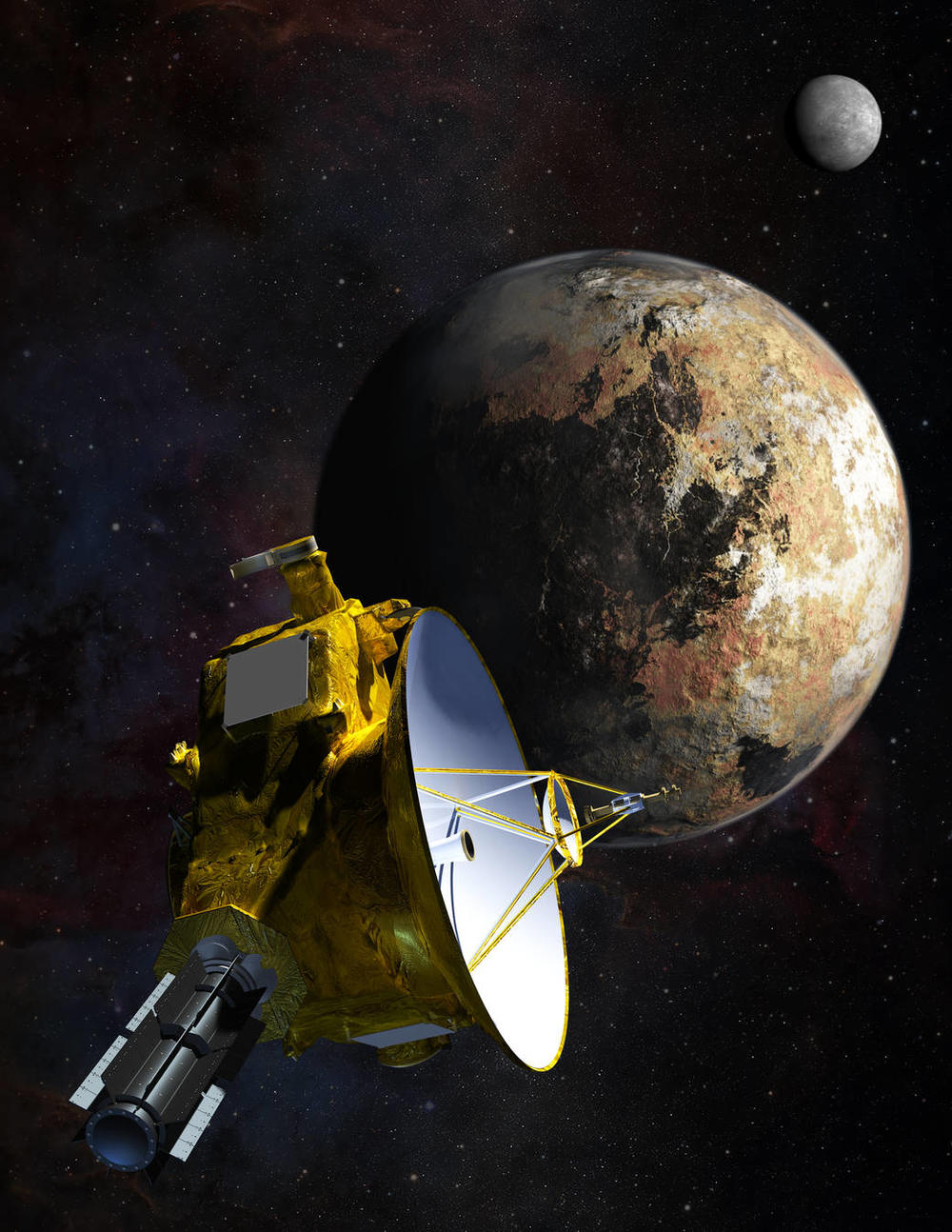
Section Branding
Header Content
This Summer Is Hot One For Space Exploration
Primary Content

Science fiction may be ruling the season at your neighborhood movie theater, but there’s plenty of real-life space action going on this summer, thanks to some very hard-working machines.
One probe has a new lease on life, and another is set to rendezvous with the outermost resident of our solar system. Meanwhile, NASA has announced plans to launch new probes towards a world that may hold the best chances for finding life.
GPB sci-tech correspondent Renay San Miguel talks with Bradley George about about what’s shaping up to be a busy few weeks in space.
· Let’s start with Comet number 67-P. That’s where the Philae lander, launched from the European Space Agency’s Rosetta space probe, touched down last November. And while that was a grand achievement, Phil-lay landed in shadow, so it only had time to do a few experiments and send back a few pictures before it lost solar power. But now it’s working again.
This is one of the more pleasant surprises for the space sciences in a long time. Philae had shut down because it didn’t quite stick its historic landing on 67-P. But the comet got closer to the sun in the seven months since then, and on June 13 it woke up and said hi. Now the ESA is carefully putting all its planned experiments back on line, including drilling into the surface of 67-P to see if we can get some better idea of the universe’s origins. Also, the Rosetta mission itself, which was going to be shut down in December, has been extended through next September. So Rosetta will keep circling the comet and relaying information as it passes beyond the sun.
·That mission is literally heating up again as it gets closer to the sun, but the New Horizons spacecraft is heading in the opposite direction as it gets ready to meet up with Pluto.
This mission was launched nine years ago by NASA, and on July 15th it will be at its closest approach to Pluto, now considered a dwarf planet. But it’s already begun to send back some images that include a possible polar ice cap on Pluto and mysterious darker areas around the northern pole of Pluto’s biggest moon, Charon. All of that indicates a wider variety of terrain on them than what was previously thought. And this has everybody very excited about what New Horizons may turn up in just three weeks, but that will also be the most dangerous time for the probe because it will get very close to Pluto’s five moons, and there may be other rocks floating around out there that can pose a threat. Yet it’s fascinating to think that this is all happening about 4 billion miles from Earth.
· New Horizons will make history when it gets close to Pluto but it’s not the first probe to visit to dwarf planet or proto-planet. That distinction belongs to the Dawn spacecraft, which is closing in on completing its second mission in the asteroid belt between Mars and Jupiter.
NASA’s Dawn probe took pictures and data of Vesta three years ago, and arrived at Ceres this past March. Ceres is the dwarf planet with the mysterious shiny patches that have so far defied explanation. But Dawn is now about 27-hundred miles above Ceres and is sending back images of more shiny spots inside a 55-mile wide crater. So for those keeping score, that’s one big shiny field, and now 8 spots that could be ice, salt or geysers. Dawn has also found what could be a three-mile high, pyramid-shaped mountain, and craters of differing sizes. The spacecraft is taking infrared readings that provide clues to the minerals that make up Ceres. In August, Dawn will drop down to its closest approach of about 900 miles, so maybe we’ll get more detail of those shiny spots.
·And finally, Jupiter’s moon Europa is going to be the subject of a new NASA mission, which is now in the design stages. The idea here is that Europa is a very strong candidate for finding life because scientists think there is the right kind of water beneath its surface. But if you saw the movie 2010, you already knew that.
In that movie, our alien overlords, the same ones from Stanley Kubrick’s classic 2001, told us to attempt no landing on Europa, but do we listen? No, and neither does NASA, because this week it’s finishing up the planning stages for a unmanned probe called the Europa Clipper that could be launched ten years from now. Europa is a prime candidate for life because of the salt water that is probably beneath its icy shell, and Jupiter’s gravitational tides provide some heat to its rocky core. Stir all that up with some necessary minerals, and you may have the recipe for, at the very least, single-celled microbes.
Tags: sci-tech-now georgia
